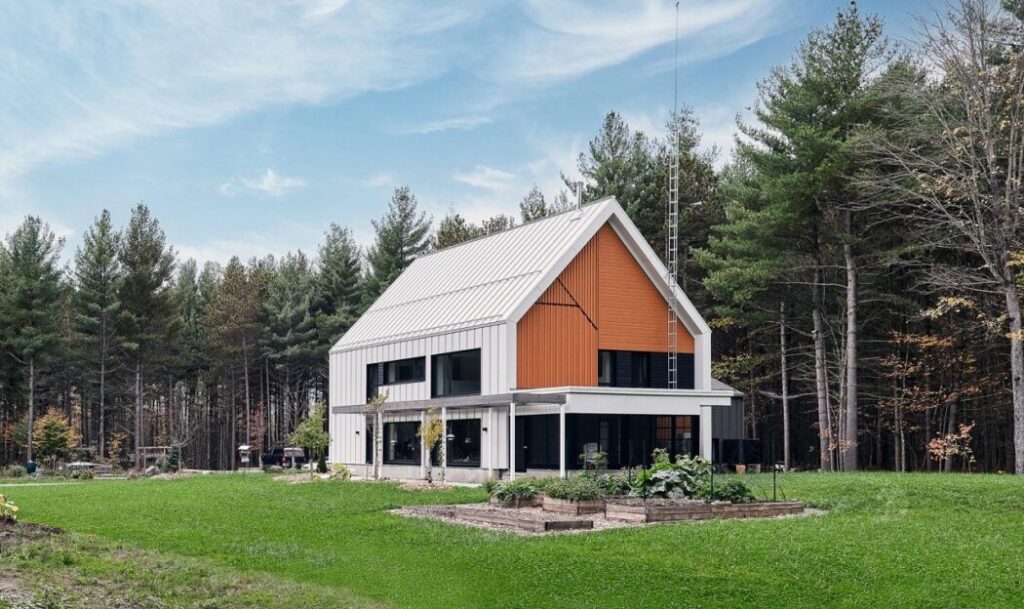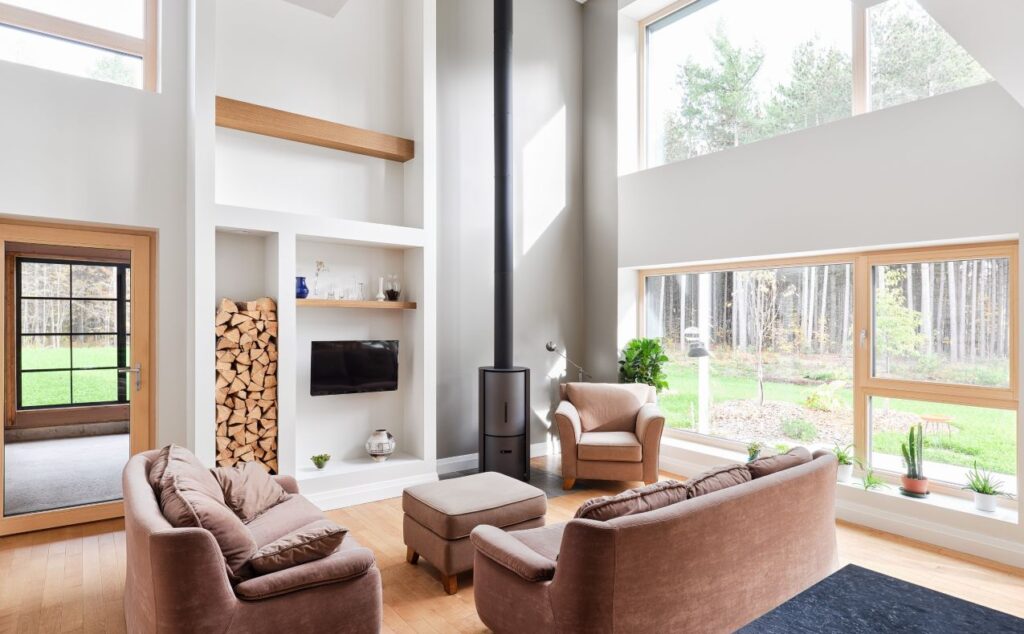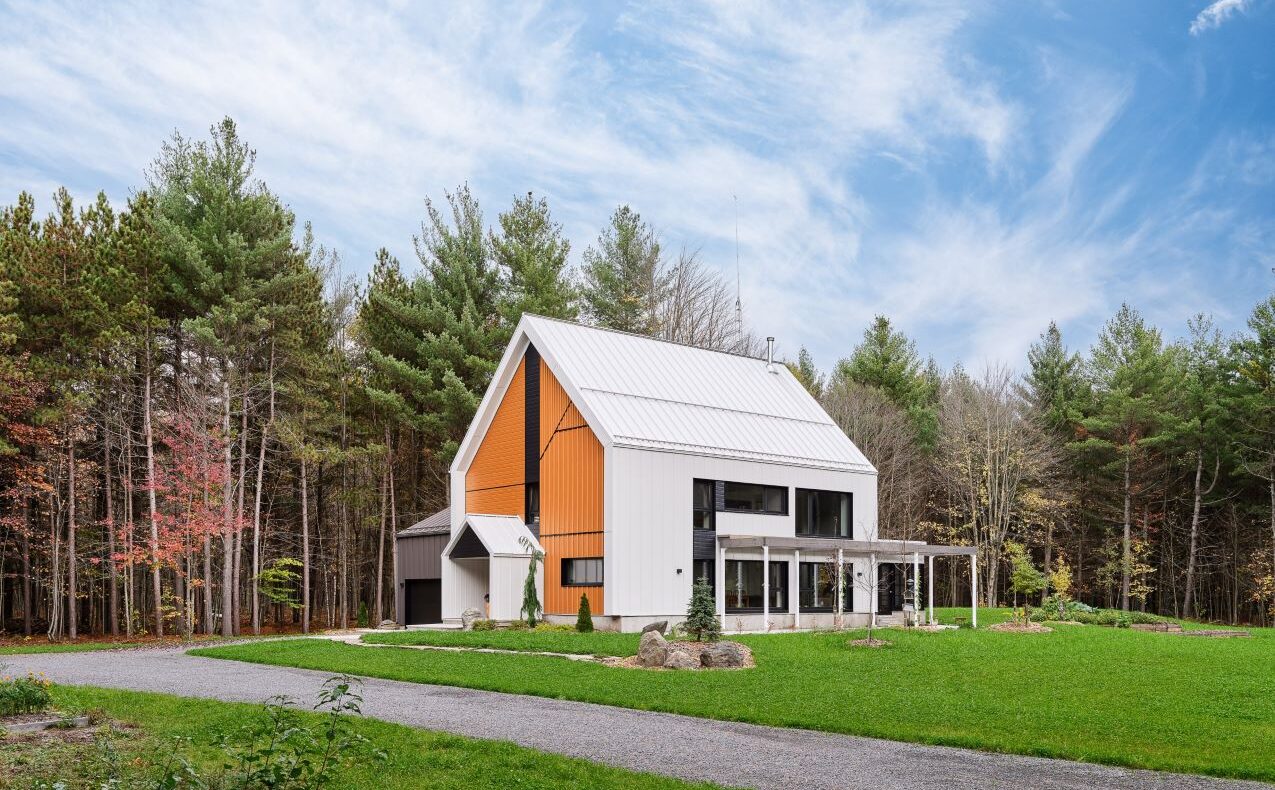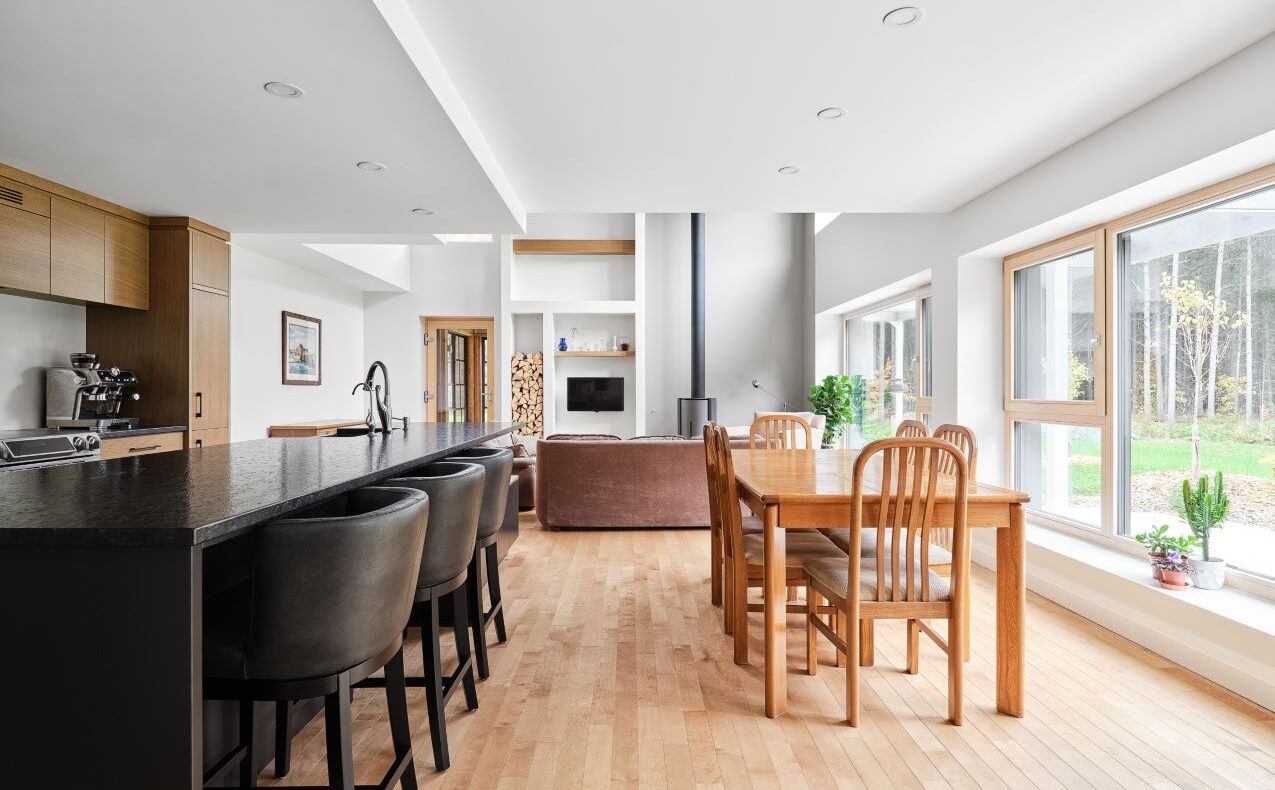A passive house just outside Ottawa is all about being active when it comes to sustainability and comfort.
Dubbed the Red and White Pines Passive House, the 4,008-square-foot custom home in Clarence-Rockland is the work of Ottawa’s award-winning ARCA-VERDE architectural design studio headed by principal architect Michael Peixoto.
The home, which was a finalist in both custom home and green innovation categories at last year’s Housing Design Awards in Ottawa, is based on the Passive House standard. That standard uses insulation, airtightness, ventilation and other strategies to achieve ultra-high energy efficiency combined with living comfort.
The home also features a cistern for water collection from roofs and an air-source heat pump.
Visually integrating the home into its natural surroundings — a 47-acre pine forest — was a key consideration in the overall design.
Peixoto recently answered some questions about the home. (Edited for clarity.)
Q: What did your clients want when they asked you to design their new home?
A: They had been working on the project themselves but realized they needed guidance. They requested a home integrated into the surrounding red and white pine forest, which they intended to manage as a retirement plan. The house was to be the central point of this activity and incorporates a passive solar design based on the Passive House standard.
Q: How does the design integrate the home with its natural surroundings?
A: The house is designed to express the site characteristics, including the surrounding forest. The home is located in a clearing that was created before our involvement and is situated against the north tree line to maximize solar exposure. Because the site has a high water table, it has a minimal foundation and a crawl space below the main floor.

Q: What are the exterior materials and why did you choose them?
A: The exterior finish is mostly standing-seam metal roofing, but composite siding is used in the three exposed gable ends. The white colour helps avoid solar heat gain during the summer months but also offers year-round contrast to the evergreen trees surrounding the clearing. The colour in the gable ends expresses the forest.

Q: How does the home’s interior design allow for natural ventilation in summer and the flow of warm air in winter?
A: The house shape promotes natural ventilation in the summer with low windows that allow air to enter the house and rise to the higher windows on the opposite side of the prevailing winds. An open-concept plan, clerestory windows and operable interior shutters that open the second-floor rooms to the double-height space of the living room all help to avoid obstacles to natural ventilation.
Q: Why did you opt for an open-concept design for the interior?
A: A traditional, non-open concept home includes designated circulation space like hallways. This can require 15 to 20 per cent more floor area, which comes at a construction cost, energy cost to heat and is often an obstacle for natural ventilation. Open-concept spaces can also be more flexible: in this case, the dining room and living room can be rearranged to accommodate a dinner party that requires a larger dining layout.

Q: What was your goal in designing the living room?
A: The living room is meant to be the focal point of the house. The proportions are intended to be comfortable and the layout flexible to provide for entertaining when needed while also supporting everyday use. The double-height space helps with the penetration of natural light and natural ventilation. The two second-storey bedrooms and den flank the high-ceilinged living room, which helps the solar energy and the wood stove in the living room heat them through convection.
Q: Were the building materials chosen for sustainability?
A: When possible, FSC (Forest Stewardship Council)-certified wood was used. Interior materials were chosen with indoor air quality, recycled content or recyclability, and durability in mind.
Q: Any final thoughts on this project?
A: The Red and White Pines Passive House is an important project for ARCA-VERDE. A unique client and a unique site offered an opportunity to develop a house that expresses quiet confidence. Designing with consideration for the immediate and global environment results in a home that has a low operational budget but also a low impact on the earth and a bright interior that connects the occupants with the exterior environment.



